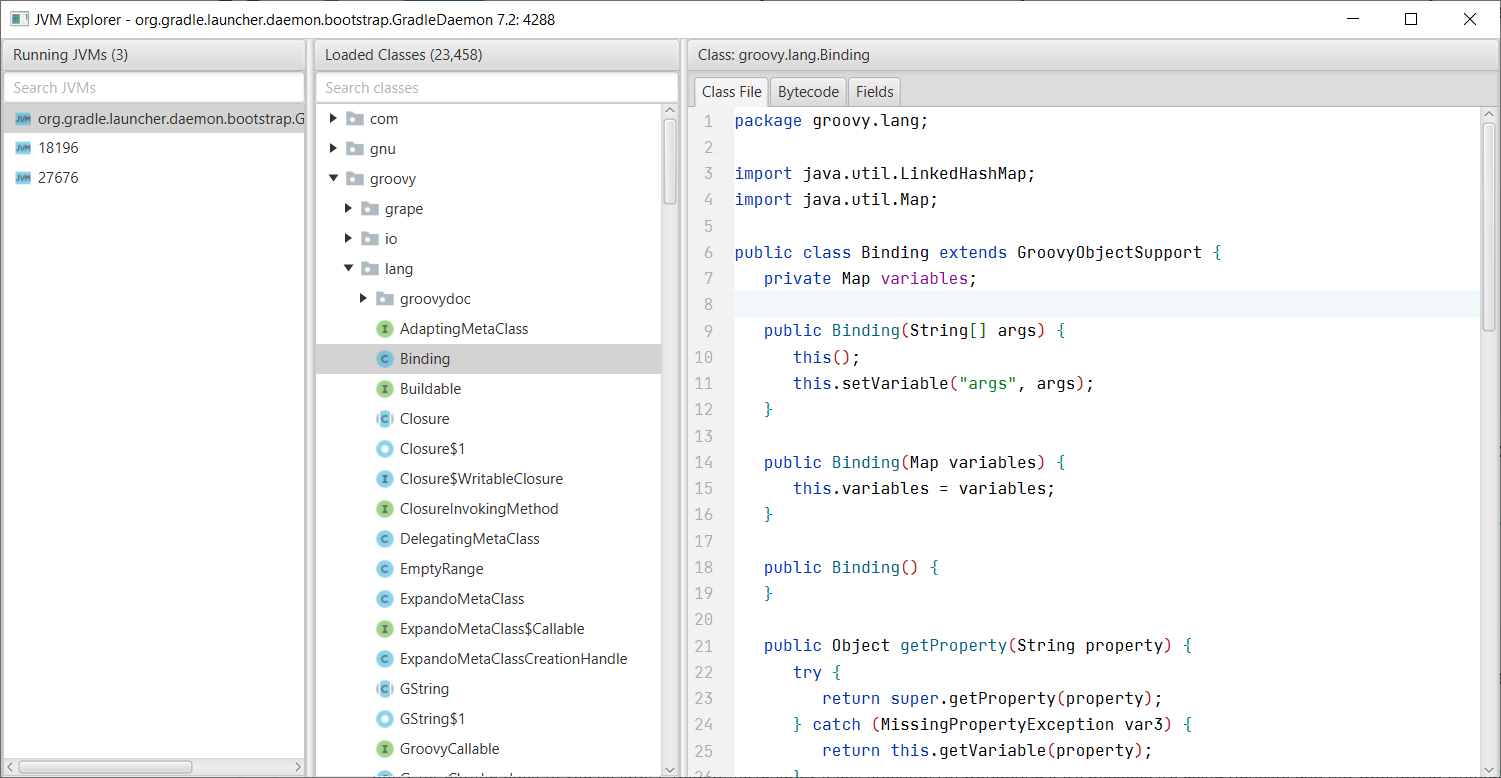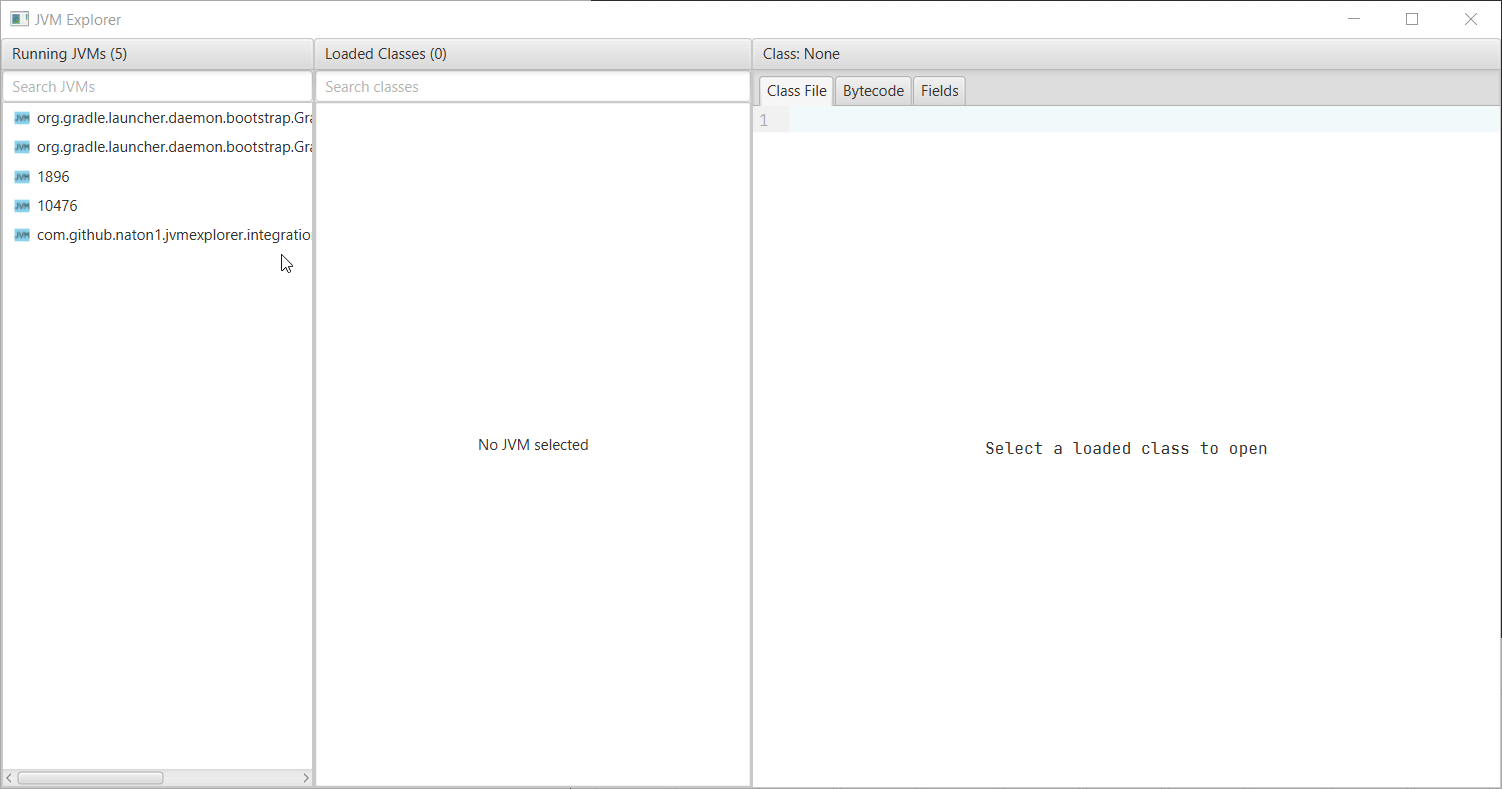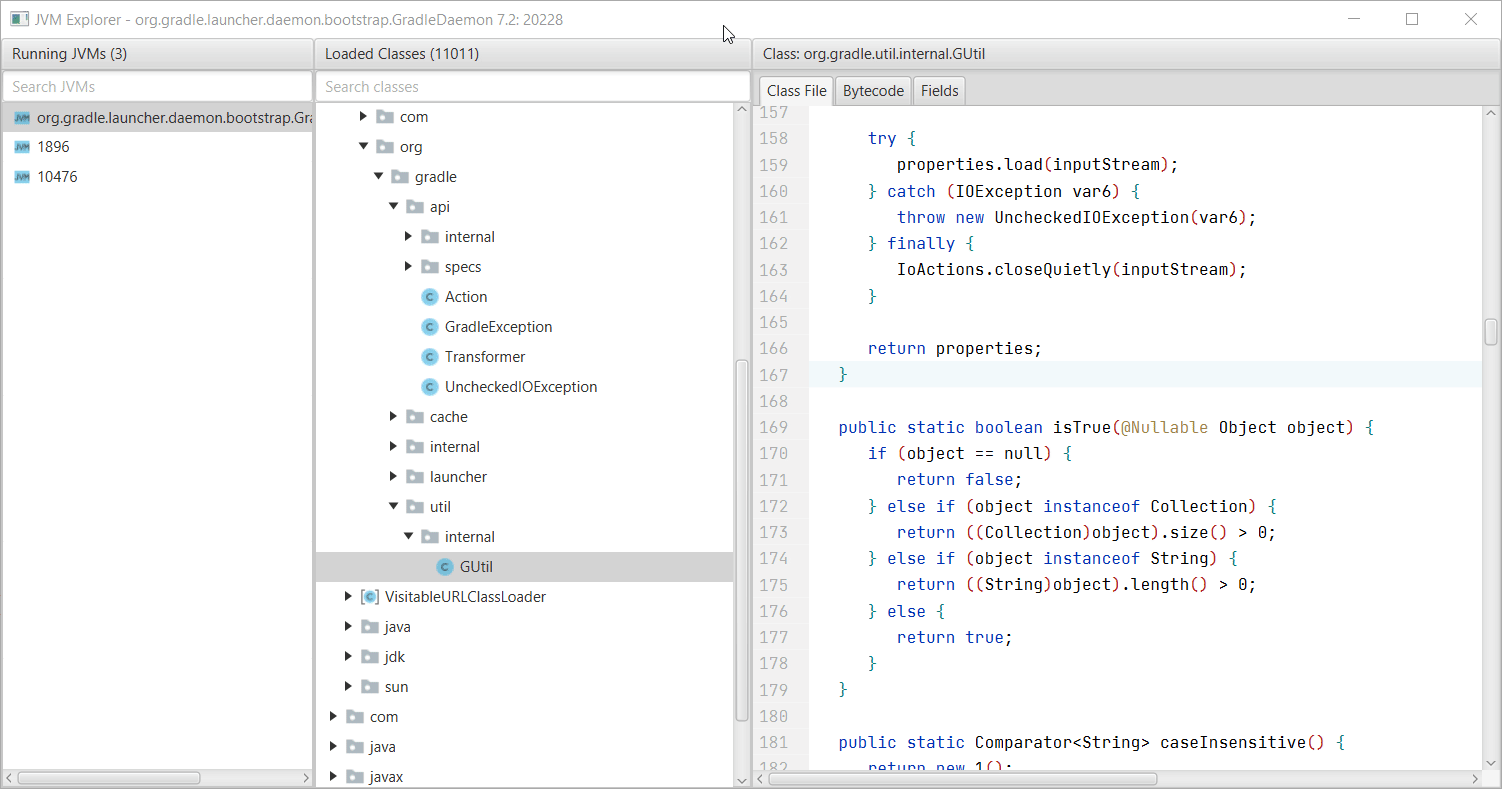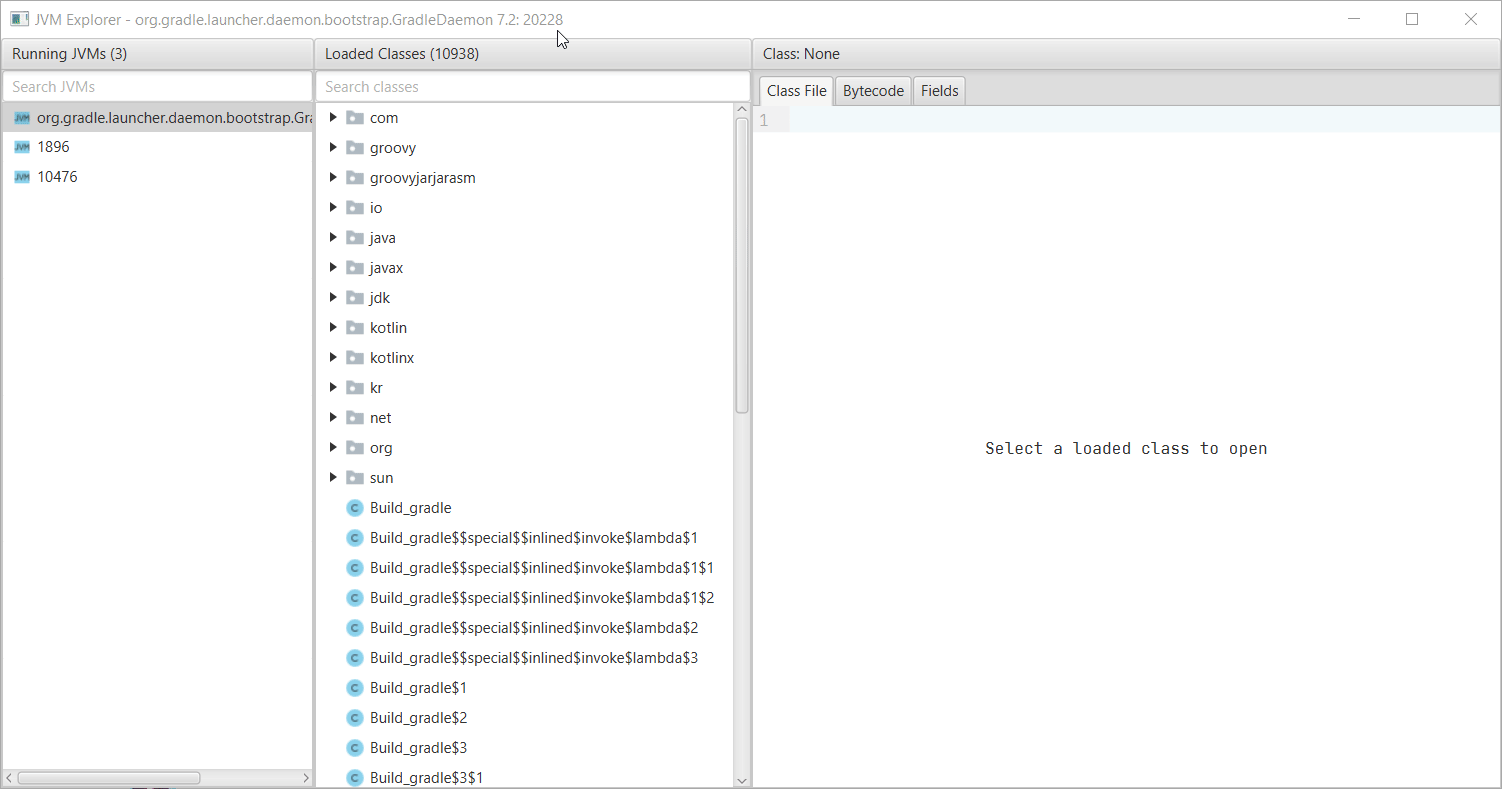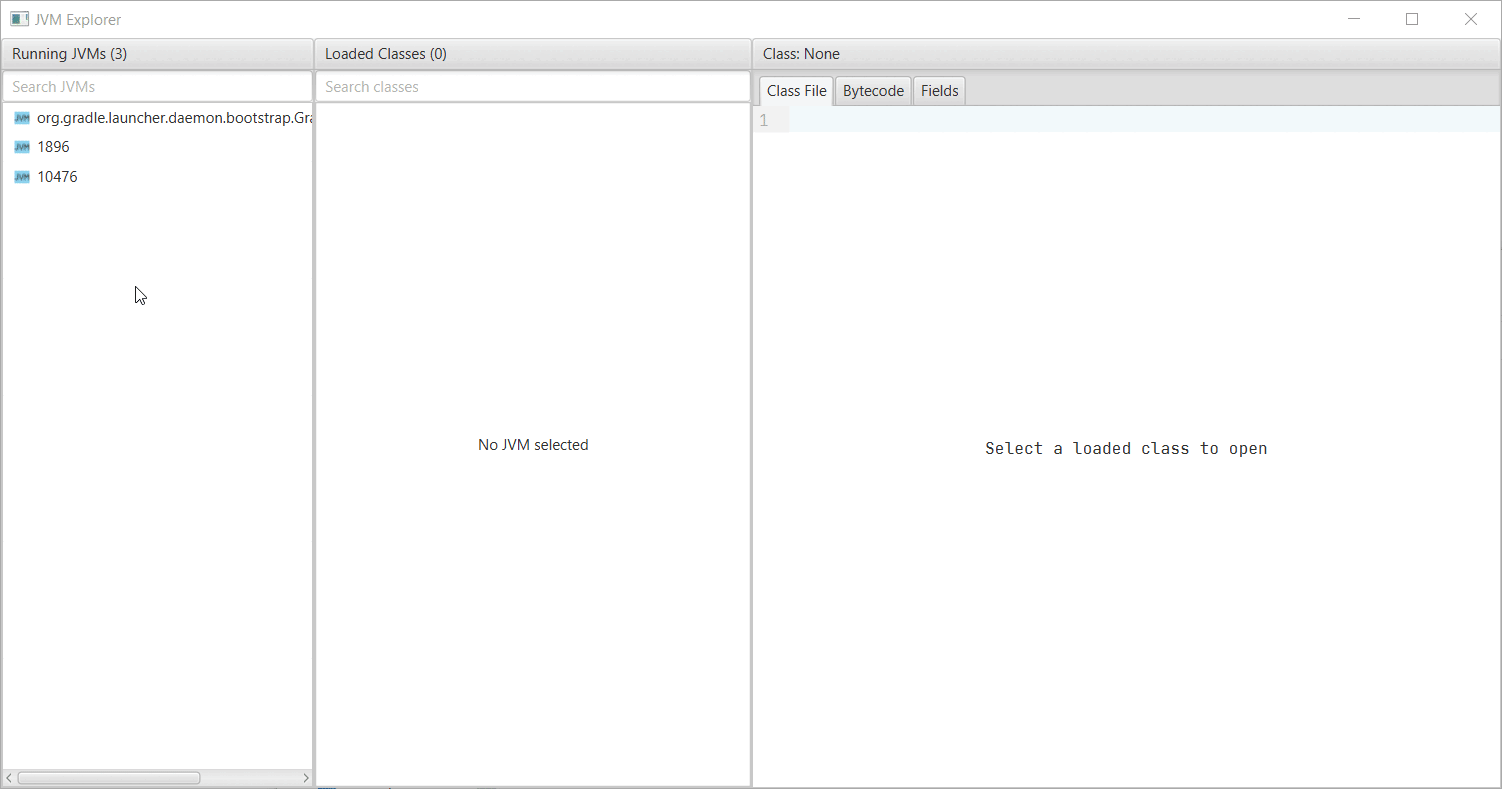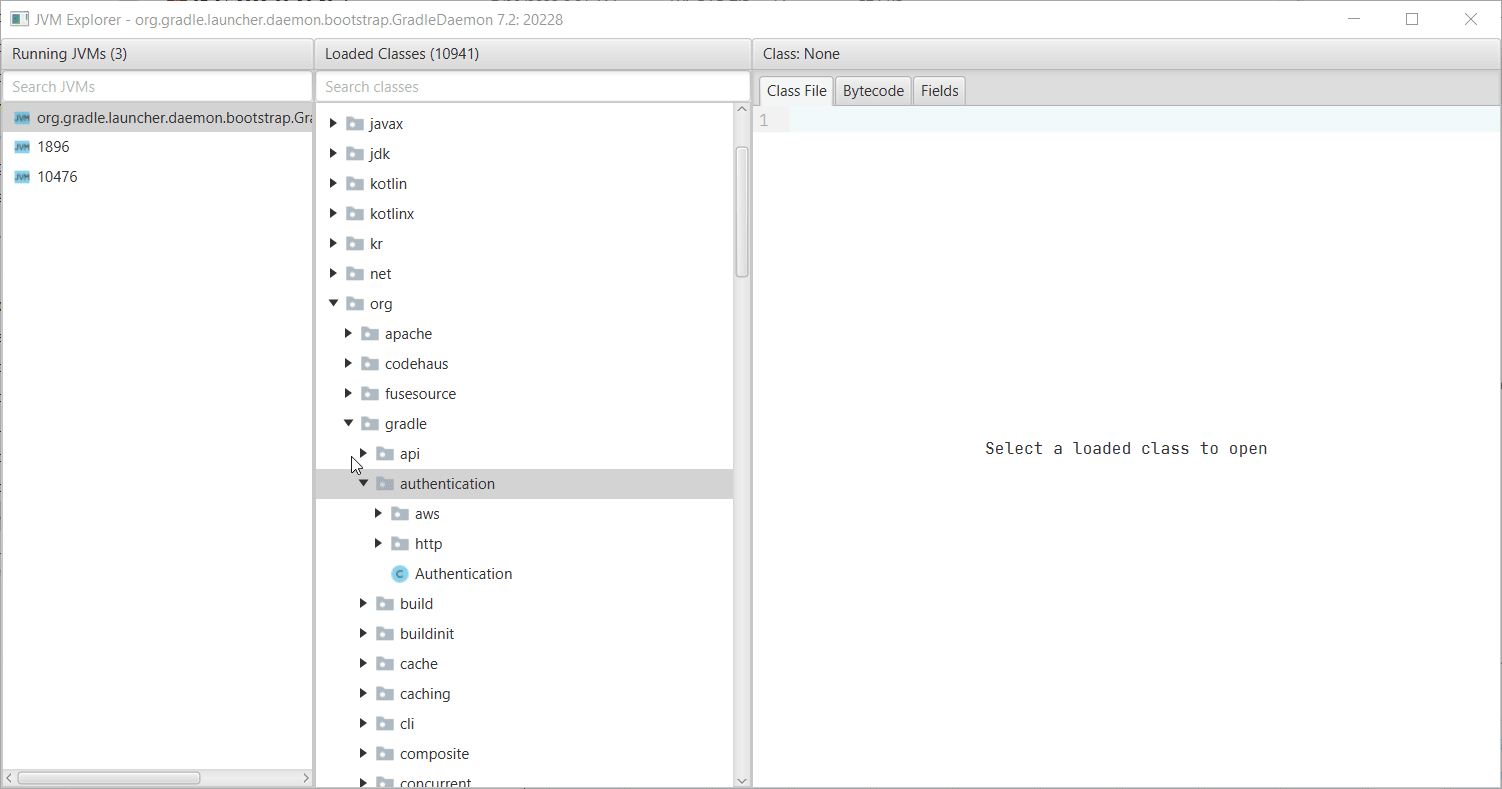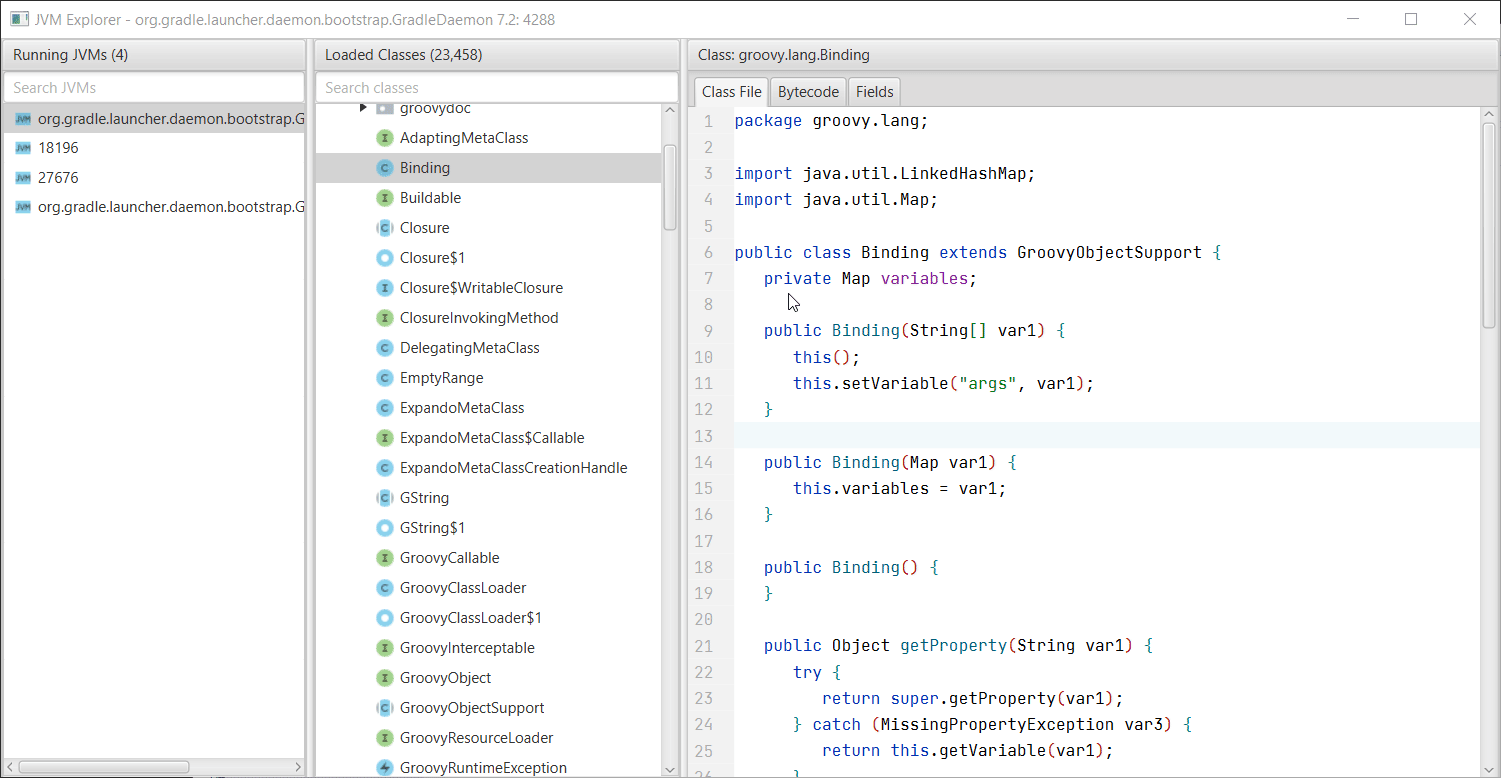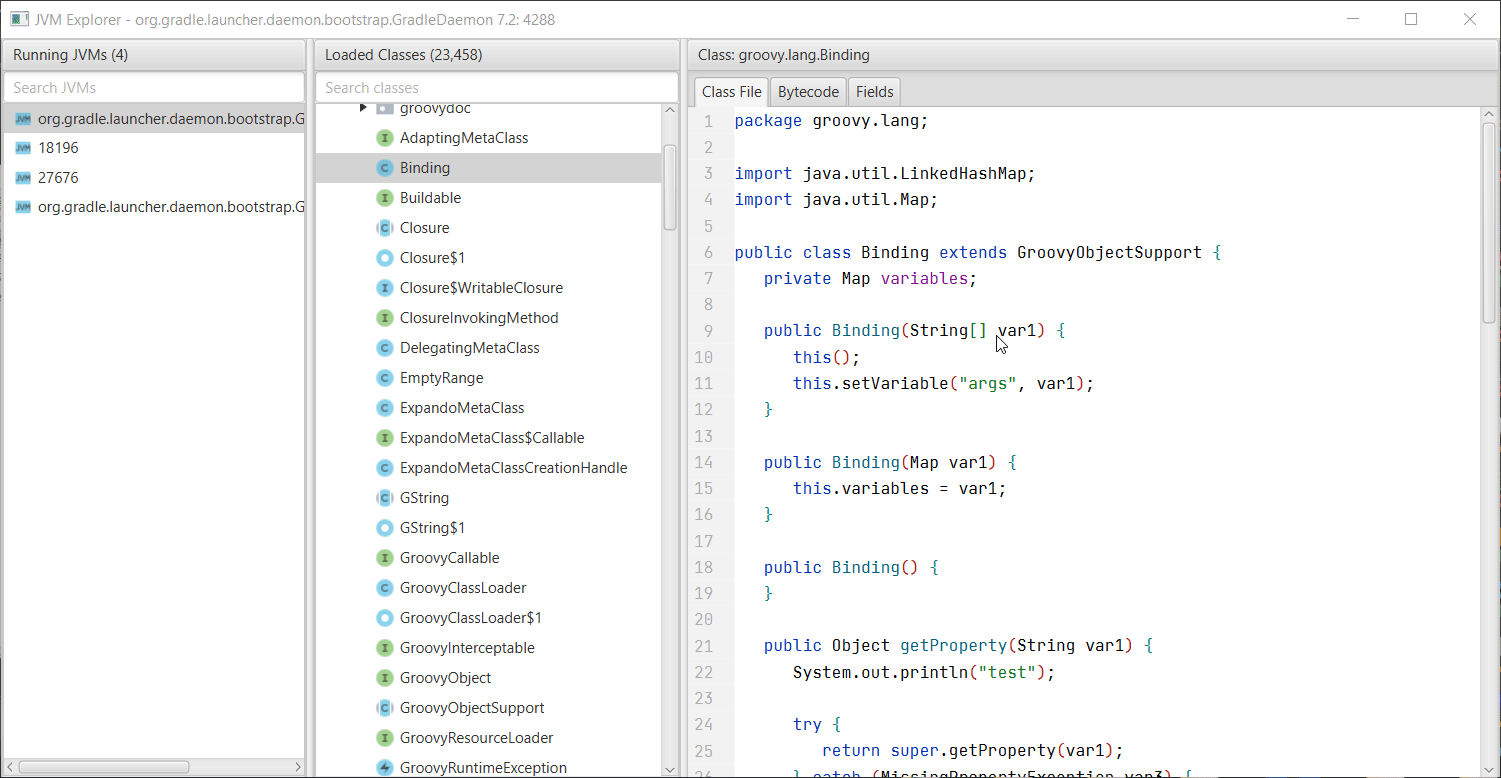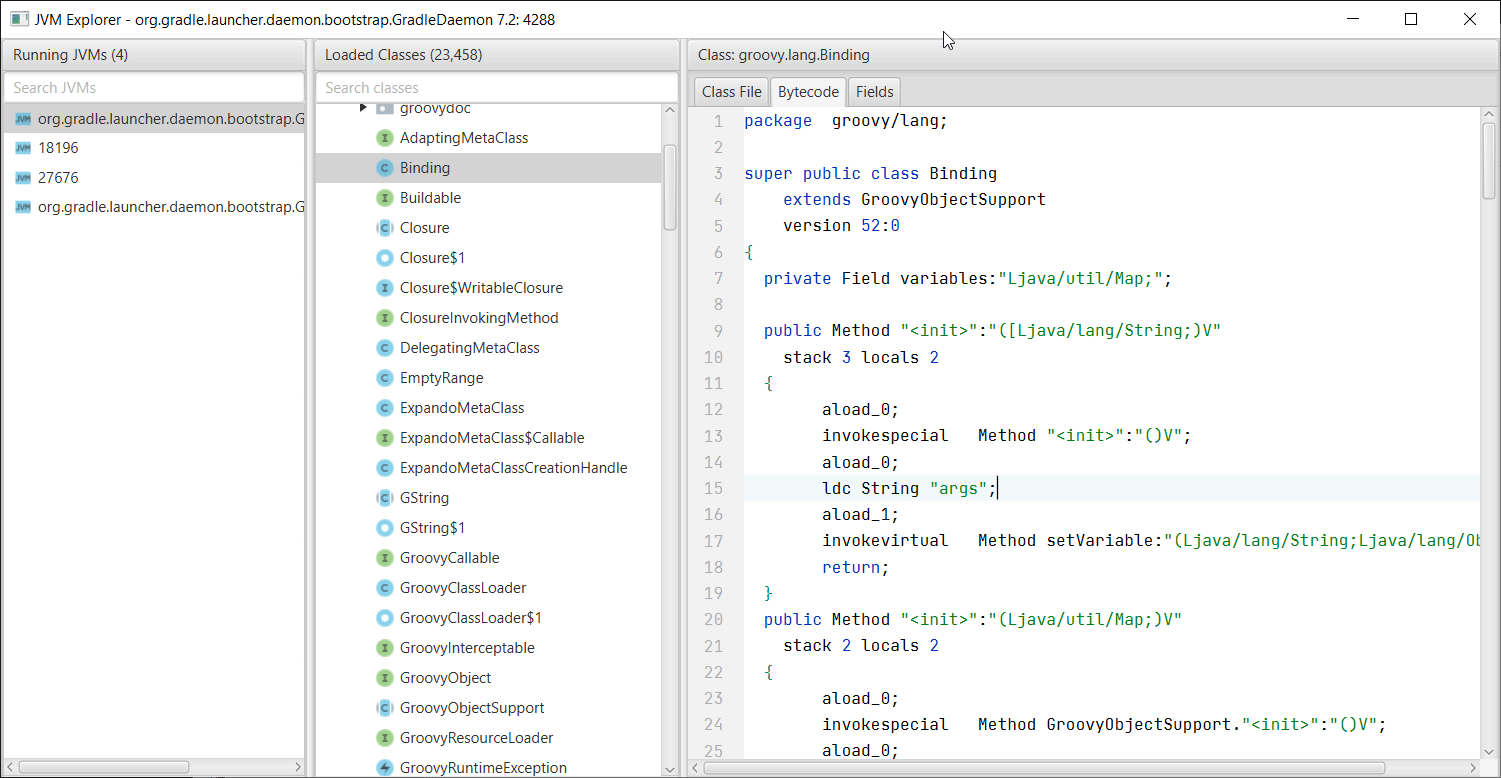JVM Explorer is a Java desktop application for browsing loaded class files inside locally running Java Virtual Machines.
- Browse local JVMs
- View all classes inside each JVM
- Search to find specific classes (supports regex)
- View classloader hierarchy
- View decompiled bytecode
- View disassembled bytecode
- Re-assemble bytecode
- Re-compile class file
- Modify method implementations (insert, replace method body with java code)
- Execute code in local JVMs
- Export loaded classes to a JAR file
- Browse the state of all static variables in a class (and their nested fields)
- Modify the state of static variables (and their nested fields)
- Replace class file definitions
- View system properties of running JVMs
- Run JAR files with a patched
ProcessBuilderto remove any-XX:+DisableAttachMechanismargument
Browse Classes And Fields
Notes:
- Ctrl + Click on a class name in the class file viewer to open it
- Search and press enter to open a class with the specified name
- Edit a field value (under Fields tab) through Right Click -> Edit - only works for primitives and Strings
Execute Code In Remote JVM
Notes:
- You can call methods in the remote classes - the loaded classes are used for the compiler classpath
Modify Method
Notes:
- You can insert code to the beginning of a method or replace the entire method body
- The compiler currently uses the loaded classes as the classpath, so if a parameter type or return type isn't loaded, it may fail (you can replace the type with Object to make it compile if you don't need that type)
- To access fields in the class, add a field with the same name and type in the class to compile - the reference will automatically be replaced
Modify Class
Notes:
- Ctrl+S to re-recompile and patch class (or Right-Click -> Save Changes)
- Often, decompiled code is not valid Java code, so it may not compile in some cases - the modify method feature is the workaround for this
- The compiler currently uses the loaded classes as the classpath, so if some required type isn't loaded, it may fail
Modify Bytecode
Notes:
- Ctrl+S to re-assemble and patch class (or Right-Click -> Save Changes)
- The disassembler/assembler isn't perfect - it works most of the time but struggles with some cases (it uses OpenJDK AsmTools)
There are three ways to run the application. Execute a provided platform-specific installer, a provided JAR file, or build and run it yourself. This application is intended to run on Java 11+ and can attach to JVMs running Java 7+.
The platform-specific installers currently support Windows, Linux, and Mac with Intel 64-bit arch
- Download a platform-specific installer (look at file extension) from the latest release
- Run the installer
- Launch the installed program
A platform-specific JAR is provided for each OS/arch combinations
- Download a jvm-explorer.jar file for your OS/arch (look at file name) from the latest release
- Run the JAR (Java 11+)
This approach will work on all platforms and architectures.
- Clone with Git
git clone https://github.com/Naton1/jvm-explorer.git
- Change into the project directory
cd jvm-explorer
- Run with Gradle (Java 11+)
./gradlew run
Two logs files application.log and agent.log are created at [User Home]/jvm-explorer/logs
- Must run the application with a Java version of at least Java 11
- Must attach to a JVM running a Java version of at least Java 7
- Must attach to a JVM running the same architecture - a 32-bit JVM must attach to a 32-bit JVM
- May have to attach to a JVM that the same user started
- Must attach to a JVM that supports the Java Attach API
- If you run an old version of this application and attach it to a JVM, then update to a newer version and try to re-attach, the agent will be outdated. If there are changes in the client-server protocol, the agent will fail. Restart the target JVM to fix this.
Note: this uses the Java Attach API so any limitations will apply here.
- Maintain a simple and easy-to-use interface
- Take advantage of attaching to running JVMs - this is not a traditional GUI decompiler
- Plugins/scripting
- Tabs/open multiple classes
- Search code/improved search mechanism
- Option to load all classes
- Internationalization
- Observe changes in fields
